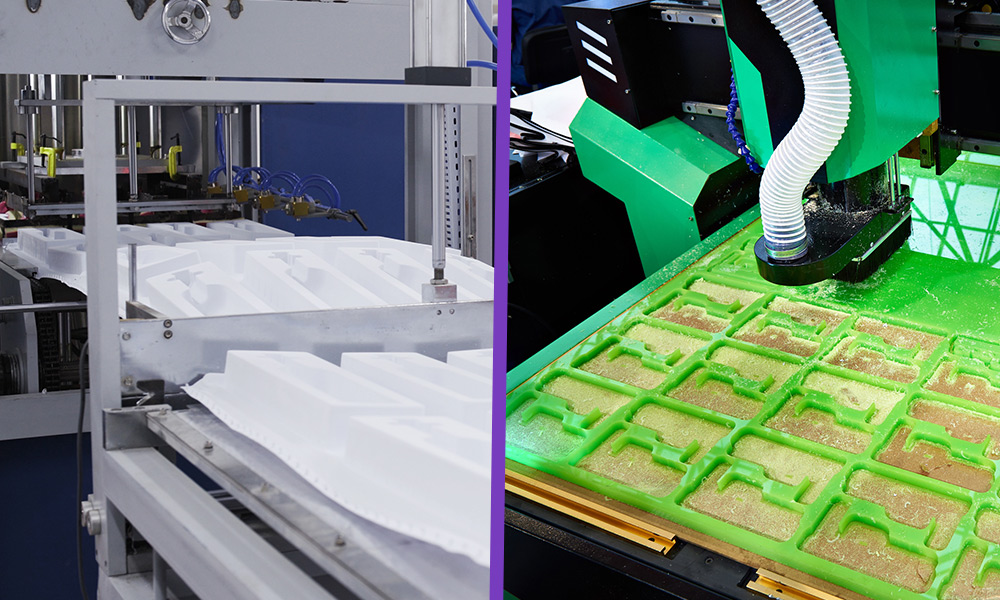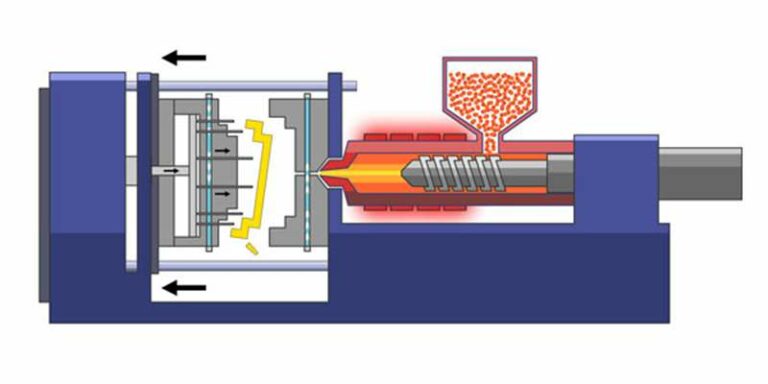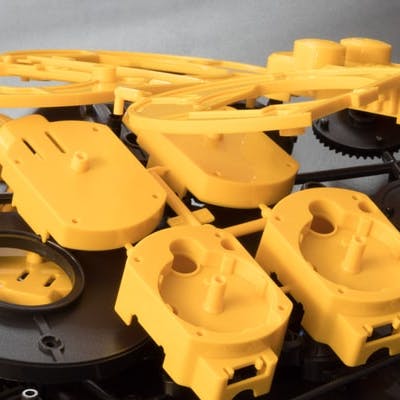Comprehending the Basics of Plastic Injection Molding Processes
Plastic injection molding acts as a keystone of modern-day production, supplying a systematic approach to producing complex components with accuracy. This procedure not just incorporates the fundamental steps of melting and infusing materials into molds however additionally involves a nuanced understanding of numerous affecting factors, such as temperature level and stress. As markets significantly require effectiveness and high quality, the ins and outs of this technique become more vital. Discovering these necessary components could expose how even minor changes can cause substantial improvements in manufacturing results, increasing questions about the capacity for advancement in this well-known procedure.
What Is Plastic Shot Molding?
Plastic injection molding is a widely used production process that transforms thermosetting and thermoplastic materials into accurate and complicated forms. This technique is favored for its ability to create high quantities of identical components with extraordinary accuracy, making it an important approach in different markets, consisting of automobile, durable goods, and clinical devices.
The process involves thawing the selected plastic material and infusing it into a mold under high pressure. The mold and mildew, made to the requirements of the wanted part, permits the molten plastic to form as it solidifies and cools. As soon as the product has solidified, the mold and mildew is opened, and the completed component is expelled.
Plastic injection molding offers numerous benefits, including minimized waste, uniformity in production, and the capacity to include complex designs that may be testing with other producing methods. Furthermore, it sustains a broad series of products, each giving distinct residential or commercial properties that can be tailored for certain applications. As markets remain to innovate, plastic shot molding continues to be at the center, allowing the advancement of sophisticated products that meet developing consumer demands.
The Injection Molding Refine
The injection molding process is a sophisticated method that involves a number of key phases to produce top notch plastic elements. Originally, plastic pellets are fed right into a warmed barrel where they are merged a viscous fluid. This molten plastic is after that injected under high pressure right into a precision-engineered mold and mildew, which shapes the material right into the wanted type.
When the mold is filled, the plastic is permitted to cool down and strengthen, taking the form of the mold cavity. Cooling time is crucial, as it influences the cycle time and the last residential or commercial properties of the molded component. After sufficient air conditioning, the mold and mildew opens, and the ended up element is ejected utilizing ejector pins.

Materials Used in Shot Molding
Different materials can be utilized in the injection molding process, each offering distinct buildings that satisfy particular applications. One of the most generally made use of products consist of thermoplastics, thermosetting plastics, and elastomers.

Thermosetting plastics, like epoxy and phenolic materials, undertake a chemical change throughout the healing process, resulting in a rigid, inflexible structure. These materials are ideal for applications requiring high heat resistance and structural integrity, frequently utilized in auto components and electrical insulators.
Elastomers, consisting of silicone and rubber-based materials, give adaptability and durability. Their special homes make them appropriate for applications that require flexibility, such as seals and gaskets.
In addition, specialty materials like bio-based plastics and compounds are getting grip for their ecological benefits and boosted performance attributes, widening the range of injection molding applications in different industries. Understanding the buildings of these materials is critical for picking the appropriate kind for specific jobs.
Benefits of Shot Molding
Injection molding sticks out as an extremely effective production process that provides numerous advantages for generating complex get rid of precision. One of one of the most considerable benefits is the capability to create intricate designs that would be tough or difficult to attain with other methods (Plastic Injection Molding). The procedure permits for limited tolerances and detailed functions, guaranteeing top quality components
Additionally, shot molding is recognized for its quick manufacturing capabilities, making it a perfect choice for high-volume manufacturing. As soon as the mold is developed, parts can be created quickly, decreasing preparations and boosting general performance. This performance not only decreases manufacturing prices but also offers an affordable edge in the marketplace.
The convenience of products used in shot molding further boosts its charm. A broad array of thermoplastics and thermosetting polymers can be employed, permitting suppliers to select products that best satisfy their particular requirements, consisting of heat, adaptability, and strength resistance.
Additionally, the procedure decreases waste, as excess product can usually be recycled and reused. This sustainability facet adds to a lowered ecological impact, making injection molding a responsible production option. Generally, the advantages of injection molding make it a recommended method for numerous sectors.
Aspects Impacting Product High Quality
While countless aspects can affect product quality in injection molding, recognizing these elements is crucial for achieving optimum outcomes. Key aspects Recommended Reading include product selection, refining parameters, and mold and mildew layout.
Product choice plays a vital function, as different polymers exhibit one-of-a-kind residential or commercial properties that affect flowability, toughness, and thermal security. Inadequate material option can bring about issues such as warping or incomplete dental filling.
Processing criteria, including stress, cycle, and temperature level time, need to be meticulously regulated. Variants in these settings can result in incongruities in part measurements and surface finish. For instance, exceedingly high temperatures might trigger degradation of the polymer, while poor stress can cause short shots.
Mold and mildew style is just as vital, as it establishes the circulation of the molten plastic and the cooling process. Improperly created molds might result in unequal cooling prices, leading to residual stress and anxieties and dimensional inaccuracies.

Final Thought
To conclude, plastic injection molding acts as an essential production procedure hop over to here that allows the efficient production of premium elements. Mastery of the shot molding procedure, consisting of the understanding of products and the impact of different factors on product quality, is essential for achieving optimal outcomes. The advantages of this approach, such as cost-effectiveness and style versatility, additional highlight its importance across numerous industries, strengthening its condition as a favored choice for high-volume manufacturing.
Plastic injection molding offers as a foundation of modern-day production, visite site offering a systematic technique to generating complicated components with accuracy.Plastic injection molding provides numerous benefits, including lowered waste, uniformity in production, and the capability to include complex layouts that might be challenging with various other producing methods (Plastic Injection Molding). As markets continue to introduce, plastic injection molding continues to be at the leading edge, allowing the development of sophisticated products that meet evolving customer demands
The injection molding procedure is a sophisticated strategy that includes numerous essential phases to generate top notch plastic components.In final thought, plastic injection molding offers as an important manufacturing procedure that allows the effective manufacturing of high-quality components.